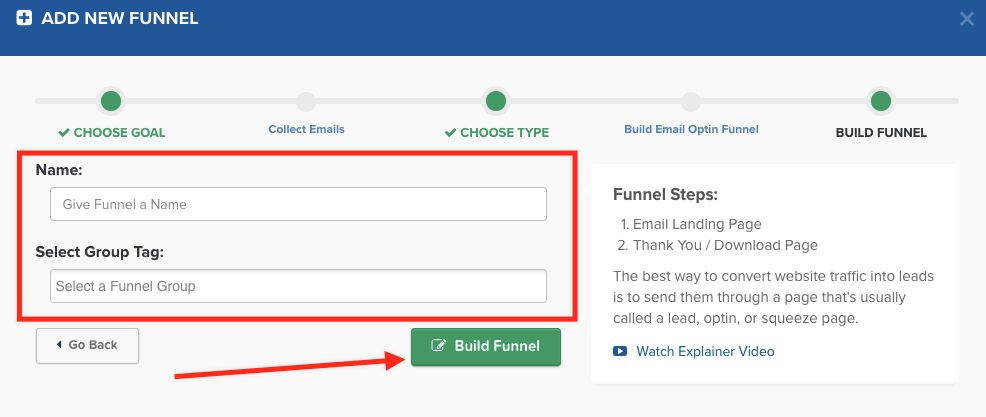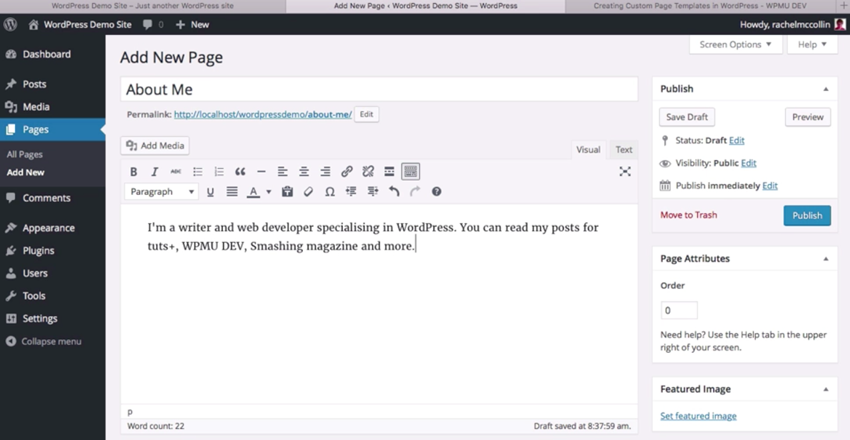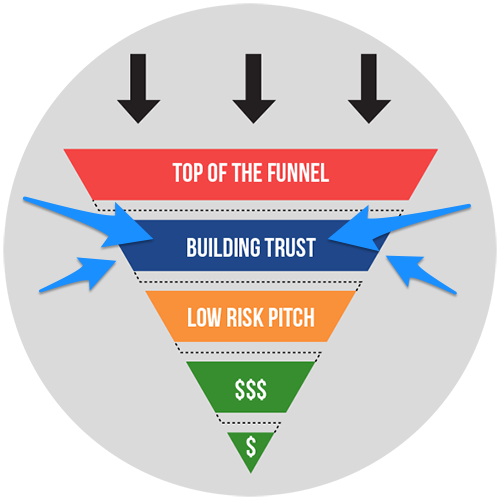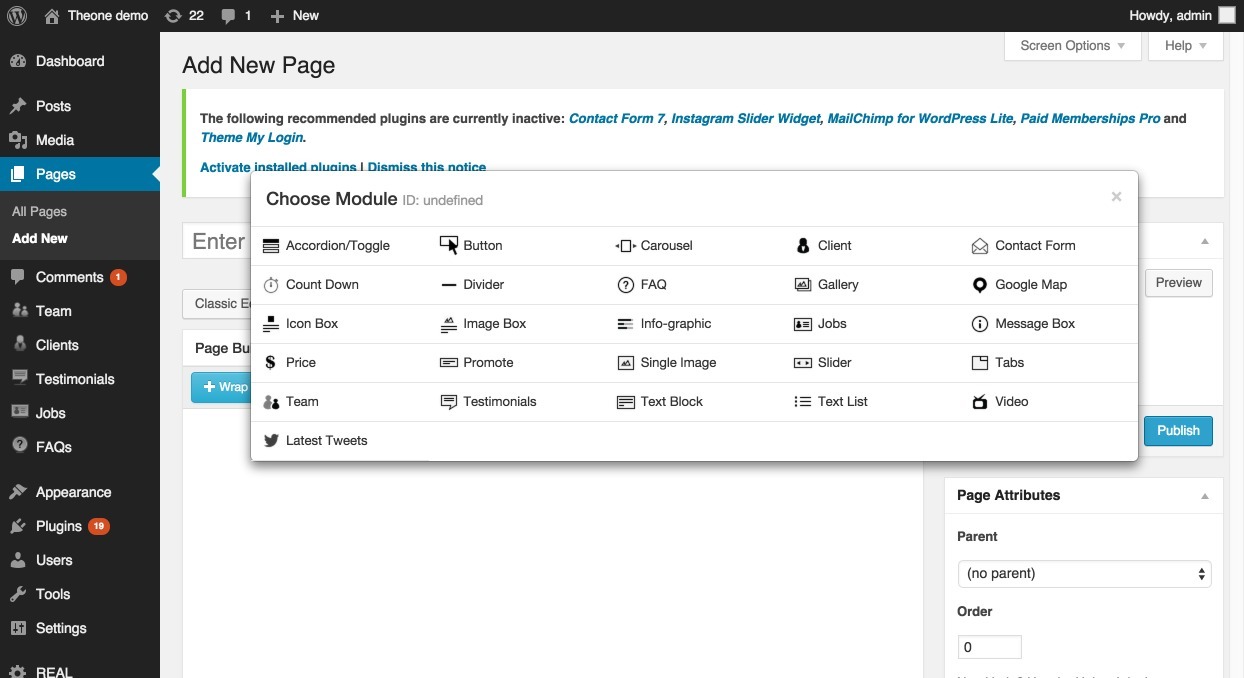How To Use The Clickfunnels Blog Plugin
Do you need a dedicated WordPress website or could you use Clickfunnels as the lead generation tool for your business? That is the question I ask in this comparison review. Clickfunnels vs. WordPress, which one works best for you?
Introduction: Clickfunnels vs WordPress
Not long ago I made the decision to move from regular work to freelancing. I knew from experience that success depends on my ability to generate a consistent flow of leads. But, I cannot afford to waste a lot of money in the process. I have no problem investing but getting a return on that investment is critical. When money is tight we have to spend time. This means making trade-offs between spending time and spending money.
The lead generation part of the business is no different.
I'm not a trained coder, so building lead generation pages from scratch was never an option. In the end, I found myself choosing between ClickFunnels and WordPress. Yet, building a WordPress site was daunting to me.
The $1000+ price tag of ClickFunnels was also worrying. Since ClickFunnels offered a 14-day trial, I decided to try it out and see what I could achieve. Afterward, I tested WordPress to see whether the time savings were worth the extra costs.
I learned a lot during this simple experiment. We will look at both sides of each solution and you can decide the best fit for your needs.
Costs
My first concern is usually: how much is all this going to cost me? I take a longer-term view of my business so I measure costs over a year, rather than month-to-month.
ClickFunnels
As mentioned it offers a 14-day Clickfunnels free trial and then has two paid options depending on your needs. Here are the two main types of accounts:
Basic Account (Starter Account)– The ClickFunnels pricing for this program is $97 per month. You will have the ability to create twenty funnels, over one hundred pages (whoa!) and up to 20,000 visitors per month.
Etison Suite (Enterprise Account) – The ClickFunnels pricing for this program is $297 per month. You will receive Actionetics and Backpack affiliate system. If you think you might want to use ClickFunnels as your "all in one" tool including List Building, this may be for you. In addition, you can utilize ClickFunnels pricing as an affiliate.
WordPress
WordPress is a little more variable.
To calculate the cost I have to consider hosting, theme, and plug-ins. Hosting would cost about $71.40 for the year, depending on the hosting service you use and the necessary themes and plug-ins would cost $89 for the year.
So the WordPress option would cost hundred and $160.40 for the year (of course, this is just for the basic setup, not including any specialty themes, e-commerce add-ons, or design spend). Another question in my head is: what am I getting for that extra $1003.60?
It's not a really fair comparison because, as Clickfunnels claims, you can replace your entire website and save thousands, but nevertheless, if you just want to get online and start building those leads, WordPress may be the less expensive option to start.
Ease-of-use
Clickfunnels

When you decide to create a new funnel in ClickFunnels, there are a lot of options. At first, I found this overwhelming. What the heck is a hero funnel? When should I use a bridge funnel? But, when you click on a funnel type there is a little explainer video that helps.
I am not current with the latest Internet Marketing lingo. So these short videos helped point me to the funnel I needed for my design company. (A sales funnel, as it turns out).
Once I was able to select a suitable funnel, I found an advantage with ClickFunnels. I could create a visitor journey to increase the chances of a lead to converting into a customer. But, two weeks was too short to know if I was trading efficacy for ease-of-use.
WordPress
Anyone can learn how to make a basic WordPress site without coding but if you need anything more elaborate or extensive for your business, it can get quite tricky. WordPress offers thousands of plugins for a reason, with thousands of themes to choose from before that. If you are a new business owner, never had an online presence, you should probably consult with a design team first (which could cost you).
Of course, there are quite a few easy-to-use WordPress themes that are free. If you just want to get online and start building leads, many of these will work.
Is WordPress easy to use?
That really depends on what you want to accomplish. If you want a basic site, you could upload a theme, or use your hosting company's theme builder and get online but that doesn't mean you'll get what you want necessarily. WordPress itself is a basic, open-sourced software tool that really does nothing. It will take a bit of know-how and expertise to learn how to use, but if you are above-average tech savvy (or learn things quickly), you can figure out how to get online.
Of course, with anything technical like a website, that is typically not always the case.
Here is what the backend of a basic WordPress site looks like:

You can take online courses and seminars to learn how to use WordPress, and of course, your hosting service or theme that you build should have plenty of materials, videos, resources for you to learn how to create a site.
Be ready to invest some serious time if you want to go online. WordPress is one of the better, and certainly most used tools for websites out there for a reason, but there is a lot of technical know-how that has to go into it.

Is Clickfunnels easy to use?
Well, that is the claim that Clickfunnels makes, isn't it — that you can be up and running and have your first funnel built in under 10 minutes. I'm not sure if that is entirely accurate, especially if you are new to Clickfunnels or just getting started.
Just like anything else in business, Clickfunnels takes some time to learn, and a lot more time to master. Of course, there are numerous online resources, many from Clickfunnels themselves that can help you along the way.
If you really want to learn more about Clickfunnels and the magic sauce behind how online funnels work, I strongly recommend reading Russel Brunson's work — even if you don't end up getting Clickfunnels for your business, this book is a must-read. It is jam-packed full of best practices, insider tips and more on how Brunson (the Founder of Clickfunnels) built his multi-million dollar funnel empire. I strongly recommend it.

ROI
The price difference between ClickFunnels and WordPress is too large for a fair ROI comparison. Instead, I judge them on both ROI and return on effort. WordPress has the advantage in the former and ClickFunnels in the latter.
ClickFunnels takes a lot less effort upfront. There is a certain amount of comfort in having the pages already predesigned for sales. I was able to sign-in, pick a funnel, and then I had the choice of a few different designs. There wasn't a lot of variation in the free designs but I found the paid options to be expensive.
Once I had a funnel template, the next step was the modification. This part took the longest but I still had a page I was happy with in under an hour.
Support
With WordPress, my site would become a total mess from time to time. I spent many hours trying to figure out exactly which change is causing the mess. Not exactly a good look for a designer.
Of course, I shouldn't be editing the live version of the site. But, editing an off-line version and making the switchover is something I find tricky. My strategy when something like this happened was twofold. First, I would post on WordPress forums asking for help. And while I awaited an answer from the community, I would begin a painful trial and error process.
With ClickFunnels support, there is an instant messaging feature. This makes it very easy to ask for help and follow along with instructions. It's not exactly instant but for me, it has always been under an hour and sometimes less than 10 minutes.
Search Engine Optimization
ClickFunnels has more SEO options than one might expect from a landing page builder. Since I am using this for paid advertising campaigns, I did not expect much in the way of SEO features. I was surprised to find that I could at least edit SEO metadata. But, it is still limiting compared to what I could achieve on WordPress. The Yoast SEO plug-in provides a more comprehensive toolset, and with some SEO know-how, you can achieve a lot of best practices using Yoast.
There are also many SEO-focused WordPress plugin if you are ready to do that, and of course, you'll have the flexibility to add your own meta tags, meta descriptions, titles, and more.
Time
The time factor was not trivial to me. I do not want to spend a lot of my day dealing with technical issues when I could be working on projects. Then again, if I don't get the tech right then I won't have any clients to work in the first place.
The time it takes to create and edit landing pages is important to me. I expect to test different page variations for optimal results with AdWords traffic.
Flexibility: My Real World Testing
I was confident in producing funnels using ClickFunnels. Yet, I did find it a little restrictive. My test with ClickFunnels went quicker than I planned. So I began testing with WordPress before my trial period was over.
My research into funnels and recent experience with ClickFunnels gave me some clues. I needed five pages for my WordPress funnel. Opt-in, confirmation, thank you, quote request, and download. The first issue I ran into was that WordPress pages contain a sidebar on the right by default. If I put links there it takes this squeeze out of the squeeze page, and if I leave it blank it looks weird.
The theme I selected had a template for full width. The problem was that this ended up being a little too wide for my taste. I had to do a bit of tinkering to get a basic layout I could live with. By this time I had already spent a couple of hours configuring WordPress.

So after about a day of work, I had my five basic pages set up and ready to go. Or so I thought. When you're doing everything yourself, it is easy to miss the little details. One of the positive points of WordPress is that it's SEO friendly. Your pages get indexed in Google very easily. The problem is that there are some pages you do not want to be indexed, especially download and thank you pages. I caught the mistake before doing too much damage. After a little more research I was able to remove the pages from my site index. It took a few days before they stopped appearing in Google searches.
After linking the pages together, my funnel was ready to go. It took about two days to complete this funnel compared to a couple of hours on ClickFunnels. I am also worried about the security of my pages. I'm protecting these pages from search engine spiders. But, could someone with technical skill still uncover them? With ClickFunnels, I am more confident in the security of these pages.
A learning experience
I am not sure how to consider the extra time I spent on my WordPress funnel. It was my first time building such a funnel but future funnels should be easier and take less time as I gain skills. In fact, the skill development aspect is what I am enjoying most about WordPress. I liken it to automatic versus manual cars. If I can build a funnel on WordPress, that skill would make me more proficient using other software.
I started this experiment looking for a way to attract new clients. As an unintended side effect, I find myself learning new skills. Although these skills are not related to my core business they seem handy to me.
My Final Thoughts: Who wins this battle?
The choice you make between ClickFunnels and WordPress will depend on your budget, time, and desire to tinker. You may prefer to pay for a more consistent and less stressful experience through ClickFunnels. Others will prefer more flexibility and enjoy the learning process of building funnels in WordPress.
On functionality, it was a dead heat. I sent an equal amount of paid traffic to each funnel and they both produced many leads. Not an equal amount of leads. But, there are so many variables at play that I cannot say the software was the deciding factor. In the end, this was a fun experiment that fixed my funnel problem and I learned a lot in the process.
Of course, you can watch this video and see for yourself if Clickfunnels could possibly replace your website:
Clickfunnels vs. WordPress: Features at a Glance
| Features | Clickfunnels | WordPress |
| Costs | Free 14-day trial, then either $97 per month, $297 per month | 13.40 + (for basic WordPress theme, basic hosting) – unlimited (considering design factors, theme add ons, e-commerce store, sign-up tools, etc.) |
| Ease of Use | You'll have to learn a bit about online funnels in general, but software is easy to learn, there are a lot of resources to help you out. Great for non-coders, or non-techies. | You will have to invest some serious time to learning how to use WordPress if you are a novice. You might also have to hire web designers depending on the type or function of your website. |
| ROI | Clickfunnels takes less effort to get started, so you could get ROI sooner. | It takes time to build a site that can return any ROI using WordPress. |
| Support | Clickfunnels has an instant messaging service to assist you when you are building out your funnels. | Depends on the theme, plugins, and hosting company you choose. Varies. |
| SEO | Has some SEO capabilities, able to edit meta data. | Full SEO capabilities using plugins. |
| Time | Clickfunnels can be up and running within a week. | It can take a few weeks to get your site up and functioning as working website. |
| Flexibility | Clickfunnels does limit options with templates, but there are many ways to brand them for your company. | There are unlimited options in WordPress overall, but depending on the themes you choose, you could be very limited in style and branding choices. |
How To Use The Clickfunnels Blog Plugin
Source: https://changecreator.com/clickfunnels-vs-wordpess-which-lead-gen-tool-works-best/
Posted by: dixongionit.blogspot.com

0 Response to "How To Use The Clickfunnels Blog Plugin"
Post a Comment